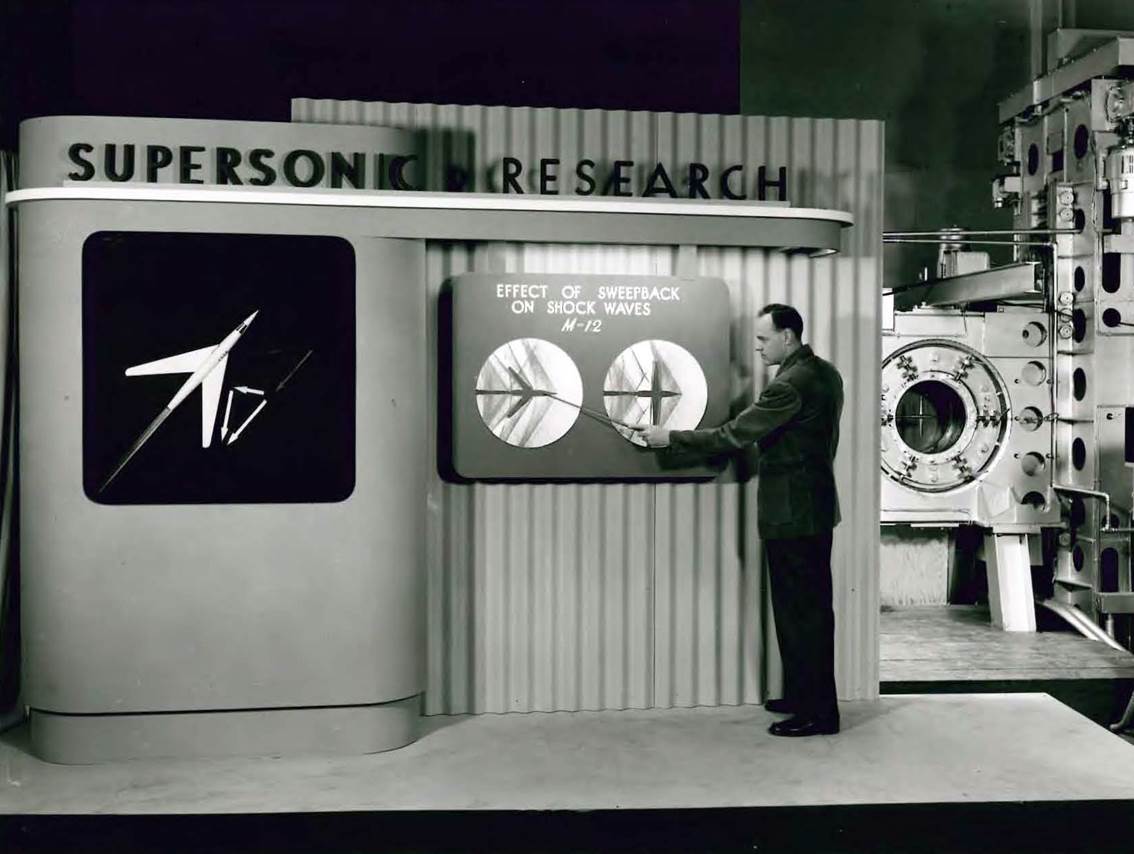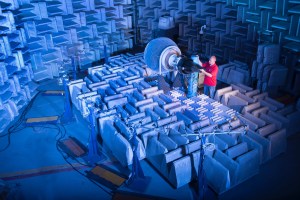Walter Vincenti remembers how his first boss, Harvey Allen, answered his desk phone. In June 1940 the Ames Aeronautical Laboratory was less than six months old, a construction site on the southern edge of the San Francisco Bay. “Theoretical Concrete and Reinforced Aerodynamics Branch!” Allen bellowed. Fresh out of engineering school at Stanford University, so much of Vincenti’s early work in theoretical aerodynamics did indeed first involve designing concrete footings under what would become the world’s greatest collection of wind tunnels.
Vincenti spent the first 17 years of his remarkable career with the National Advisory Committee for Aeronautics (NACA), the predecessor of NASA, founded 102 years ago, on March 3, 1915.
Vincenti joined the NACA Ames Aeronautical Laboratory in 1940 as its fifth engineer. During the war years, like everyone with the NACA, he focused on solving problems discovered as American fighter aircraft pushed their limits. After the war, supersonic flight seemed possible. Walter led the new 1-by-3-foot supersonic wind tunnel at Ames that generated data fundamental to theories of efficient high-speed flight. Walter’s branch at Ames gave aircraft companies knowledge useful to design and build swept-wing aircraft that routinely broke the sound barrier. That sort of fundamental engineering — solid data and elegant mathematics in advance of industrial need — was what made the NACA such an exemplary federal agency.
Vincenti’s superb work in aerodynamic theory brought him to the attention of nearby Stanford University. Even though, like most NACA engineers, Walter had no doctorate, in 1957 Stanford offered him a full professorship and tasked him with re-invigorating their department of aeronautics and astronautics. Walter asked the Ames director, Smith DeFrance, if he should take the position. DeFrance thought Vincenti could do more for Ames by training its next generation of aerospace leaders. Indeed, one of Vincenti’s first graduate students was Dale Compton, a future Ames center director. Vincenti’s teaching, research and writing while at Stanford focused on physical gas dynamics, the theory of air flow around reentry vehicles.

Walter then embarked on a third career. The NACA had published a series of technical reports, thoroughly reviewed and carefully edited to be authoritative. While at the NACA, Walter earned a reputation for writing beautifully. He matched his writing skills with a concern, born in the tumult of the 1960s, about the societal impacts of accelerating technology. At Stanford he founded a program in science, technology and society, the first “STS” program in America. He started writing history, and in 1990 published “What Engineers Know and How They Know It.” In a series of engineering case studies, some harking back to his days with the NACA, Vincenti illuminated the processes of engineering epistemology — how engineers overlay data, theory, and rules-of-thumb well enough that they feel certain enough to commit to a specific design. The Society for the History of Technology awarded him both its prize for best book, and for lifetime achievement in the understanding of technology’s past.
Vincenti recently earned the Guggenheim Medal for 2016. The Guggenheim Medal is perhaps the premier recognition for a lifetime of achievement in the advancement of aeronautics. The American Institute of Aeronautics and Astronautics administers the award, jointly with the American Society of Mechanical Engineers, the Society of Automotive Engineers and the American Helicopter Society. The medal was established in 1929 by Daniel Guggenheim, credited with working with the NACA to bring aeronautical theory to America in the 1930s.
The award honors Vincenti’s “seminal pioneering supersonic wind tunnel research, education in high temperature gas dynamics, and exceptional contributions to the history of engineering technology.”
Walter joins such Guggenheim awardees as his first boss at Ames, Harvey Allen; most of the members of the 1940 NACA Main Committee; his Stanford mentor, William Durand; and his Stanford teaching colleagues Nicholas Hoff, Holt Ashley, Antony Jameson and Art Bryson.
The NASA Langley Research Center, the first NACA laboratory, turns 100 years old this summer, and will host several events to celebrate its storied history with the NACA and NASA. Walter turns 100 in April.
For more information, see the award announcement.
Author: Glenn Bugos, Ames History Office
Media contact: Darryl Waller, Ames Research Center


































